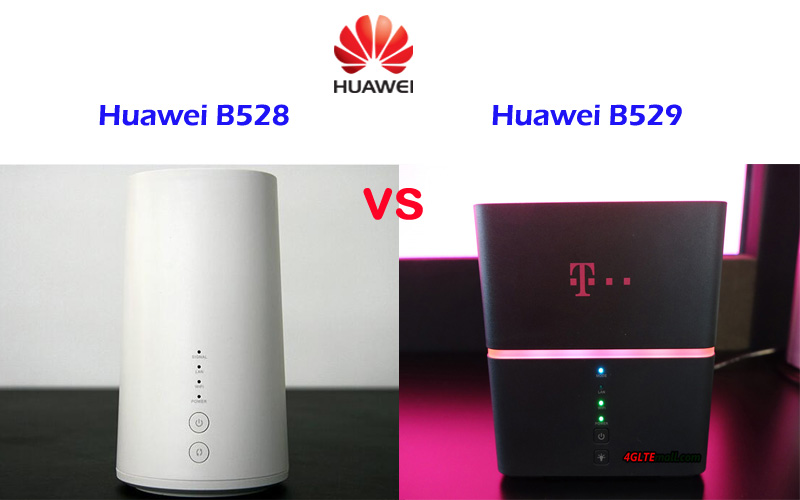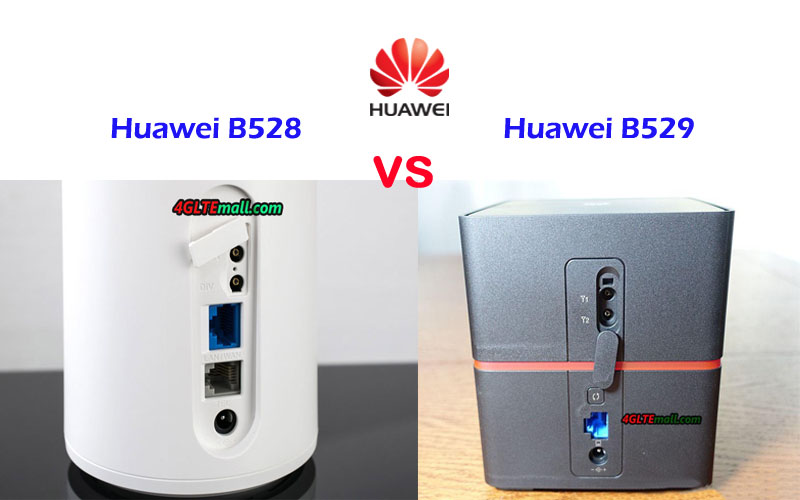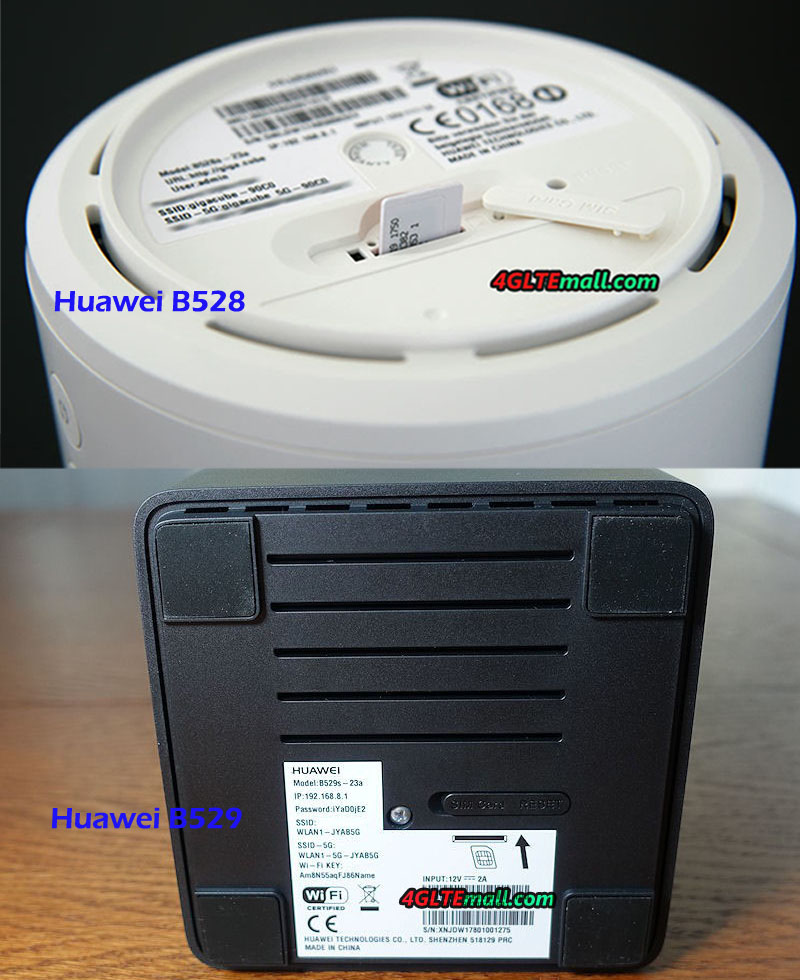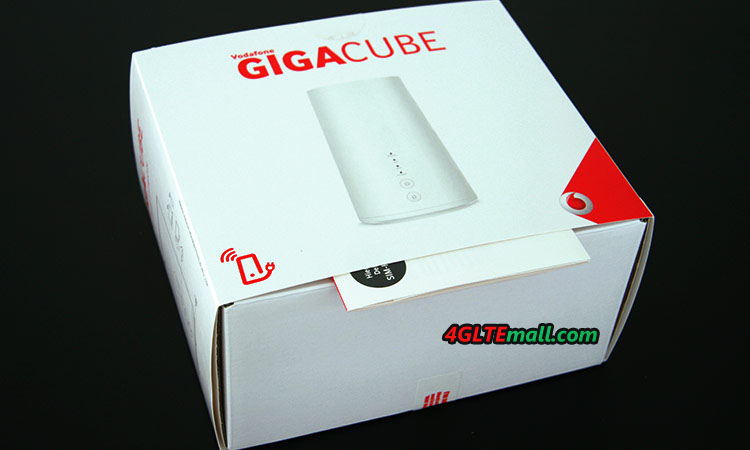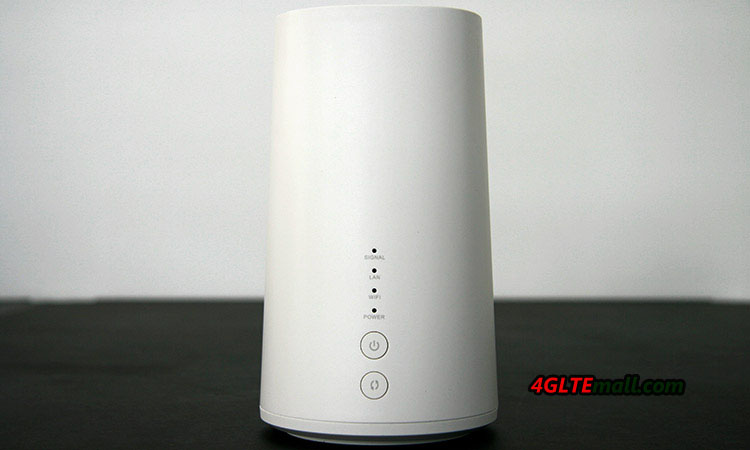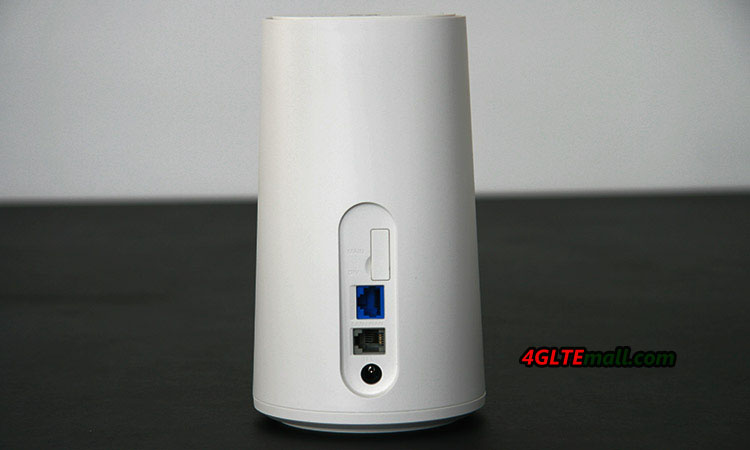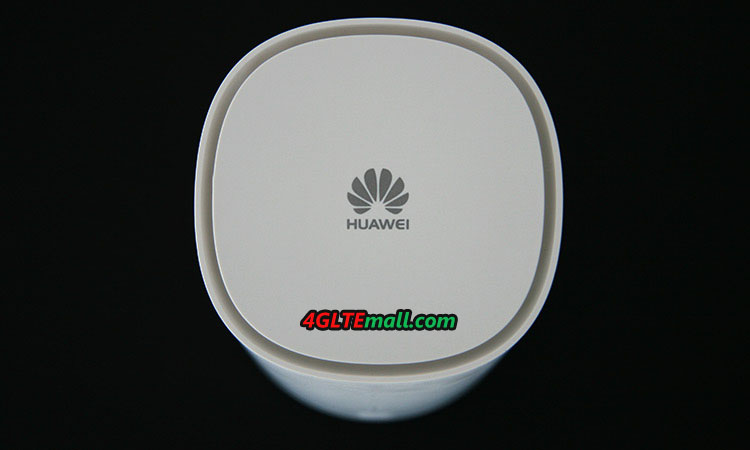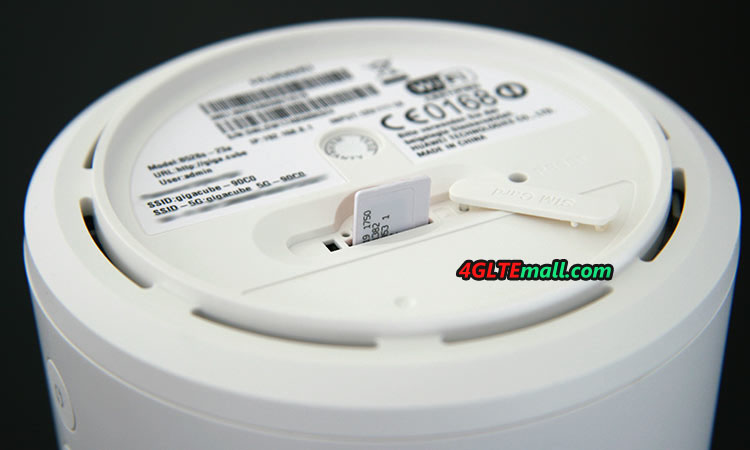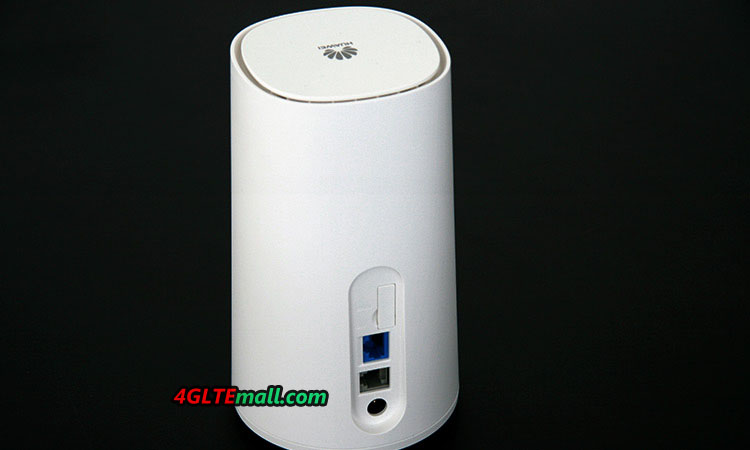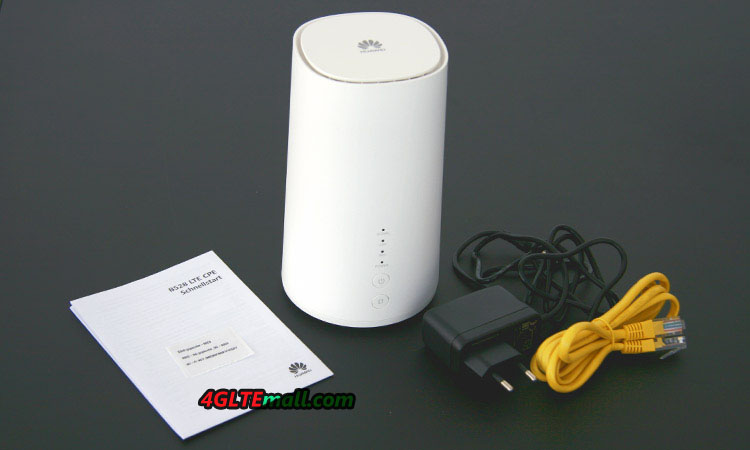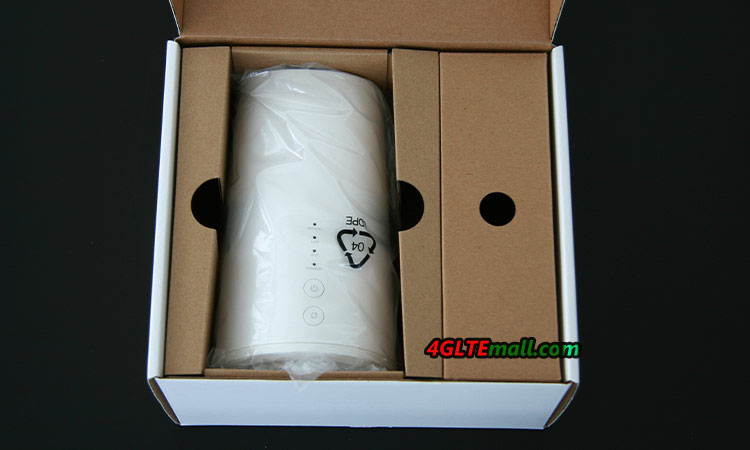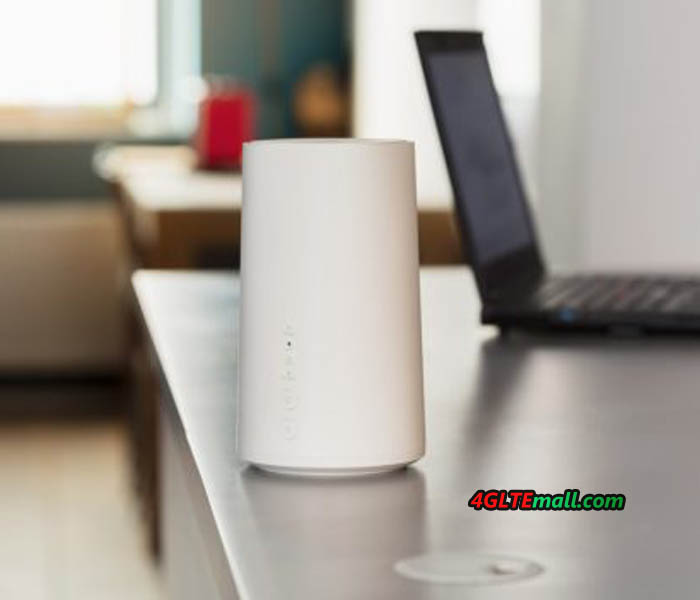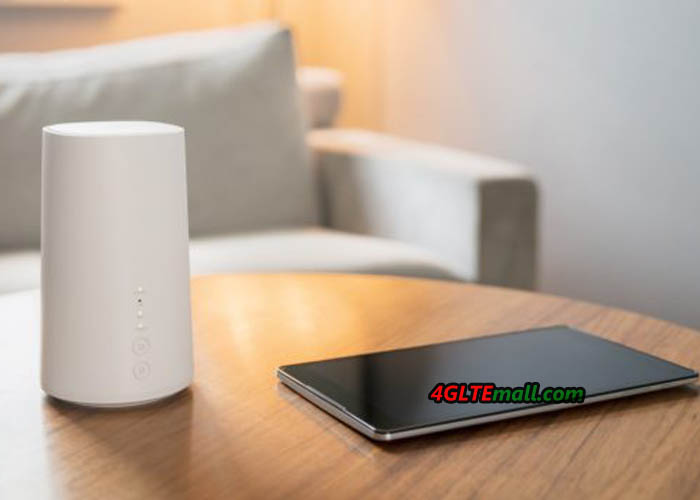Since more and more Huawei LTE cubes available in the market, more and more people accept the Huawei Cubes as consumer electronics. Actually, they are still the wireless routers essentially. Huawei assigns the 4G wireless gateway to a new design and combines the workmanship with router functions to make the Cube series product very special but attractive for home use. Huawei B528 and B529 cube are two latest LTE cube for Europe market. Since they are very newly released, many people may don’t know them or don’t know what’s the difference between the Huawei B528 and B529. We will have a review about the two LTE routers and give some buy recommendation for potential users.
Huawei B528 VS B529 Appearance and Interfaces
Frankly speaking, the Huawei B528 LTE Router and B529 Cube are both cool in the design. You may not think they are Huawei wireless 4G Router when you first look at them. The Huawei B528 is in black like a cake and the Huawei B529 looks like a humidifier in white. On the front of Huawei B528, there are indicators for Mode, LAN, WiFi, and Power while the Huawei B529 Cube changes the Mode to Signal. The power button is below the indicators. On the back of Huawei B528, only one Ethernet port is available for LAN. The Huawei B529 has one Gigabit Ethernet port for LAN with one VoIP port. The same feature is the power plug below the Ethernet port. And above the Ethernet port, there are two connectors for external antennas. The connector type is both TS-9. So if you have a Huawei B528 external antenna, you can use it with Huawei B529. What’s more, the two WiFi Cube both uses Micro SIM size and locate the SIM card slot at the bottom of the devices.
Huawei B529 VS B528 Specs and Variant model
Currently, the Huawei B529 is only available for T-mobile in Europe and get a new name as HomeNet Box. The specific model number is Huawei B529s-23a. Like the B529 Cube, the Huawei B528 is available for the network provider Vodafone and gets a new name Vodafone GigaCube with specific model number Huawei B528s-23a. Unlike the Huawei B618 Cube, they both have an only variant model now. But we are not sure whether there will be more variant models in near future.
From the appearance and interface, you may not get the core difference between the two routers. Let’s have a looks at the Vodafone B528 specs and Huawei B529s-23a specs in the tables below:
| Model | Huawei B528s-23a | Huawei B529s-23a |
| Product type | LTE WiFi Cube | LTE WiFi Cube |
| Category | LTE Cat.6 | LTE Cat.6 |
| Chipset | HiSilicon Balong 722 | HiSilicon LTE Cat6 Chipset |
| Data rates | DL 300Mbps/UL 50Mbps | DL 300Mbps/UL 50Mbps |
| Supported 4G LTE frequency bands | LTE B1, B3, B7, B8, B20, B32, B38 | Band 1/3/7/8/20/32/38 |
| WLAN | 802.11a/b/g/n/ac, dual-band 2.4GHz & 5GHz | 802.11a/b/g/n/ac, dual-band 2.4GHz & 5GHz |
| Max support users | 64 users | 64 users |
| MIMO | 2 x 2 MIMO | 2 x 2 MIMO |
| Connector for external antenna | Two, TS-9 jacks | Two, TS-9 jacks |
| Buy Antenna | Huawei B528 External Antenna | Huawei B529 External antenna |
| App management | Huawei Hilink APP | Huawei Hilink APP |
| SIM type | Micro SIM | Micro SIM |
| Battery | NO | Yes, non-removable 3000mAh battery |
| Dimensions | 105 mm x 90mm x 181 mm | 120 x 120 x 125mm |
| Interfaces | * 1 x power adapter port * 1 x LAN port(RJ 45)* 1 x RJ11 (VoIP)* Two external LTE antenna ports (TS-9) * One micro-SIM card slot |
* 1 x power adapter port * 1 x LAN port(RJ 45) * Two external LTE antenna ports (TS-9) * One micro-SIM card slot |
| Datasheet | Huawei B528 Datasheet | Huawei B529 Datasheet |
| User Manual | Huawei B528 Manual | Huawei B529 Manual |
| Other features | IPv4 /IPv6 dual stack | DHCP Server, DNS RELAY and NAT |
| Reviews | Huawei B528s-23a Review | Huawei B529 Review |
| Price/USD | 399.00USD | 299.00 |
Conclusion
The Huawei B528s-23a and HomeNet Box B529s-23a are both LTE Category 6 router, which could support peak download speed to 300mbps and upload speed. They could both support maximum users up to 64 devices. They support even same LTE frequency bands. The only difference is on the Huawei B529 has one more VoIP port than B528. So if you would buy one home router between the two, you would consider the interface first. If you don’t use the VoIP, just take the preferred appearance and make the decision. Per our test, the two routers could support fast internet connection in the real network.
